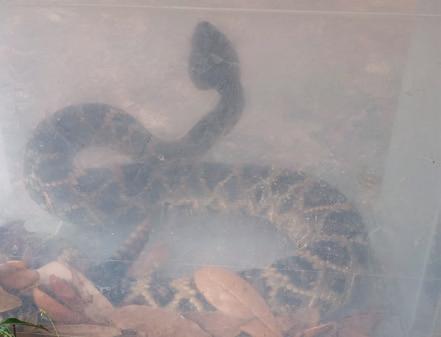
4 minute read
Editor's Note
Living with Wildlife
We’re well into Spring, halfway to Summer, as we put this issue of Southern Tides together, and it’s apparent on multiple levels. First in the plethora of content and story ideas that are coming across my desk, but even more so in nature. Our coastal wildlife, rather than stretching and yawning and waking lazily from their long winter naps, have come roaring into action!
Advertisement
Sea Turtle season officially began May 1, but started early this year with a false crawl on Jekyll in April. As of this morning (May 5) there are five nests on Cumberland Island and one on Sea Island, and I have no doubt those numbers will grow substantially by the time this magazine is in your hands, this time next week. Hopefully they’ll have a record year!
Readers, please educate your guests from out of the area about not disturbing turtles or their nests, and not interfering or engaging with manatees; and marina operators, please remind your boaters to watch for turtles and for manatees, not just on beach fronts and open water, but also in creeks and rivers.
Land-based creatures are active as well. Last Sunday I was working in my garden and had just finished transplanting some seedlings when I realized I shouldn’t be hearing locusts. I looked around and saw my cat, who only gets an hour or so of outside time each day, stalking a pile of leaves. A pile of gold leaves with brown diamonds that was coiling itself in preparation to strike, and the source of the noise I was hearing, which I then realized wasn’t the buzz of locusts but the rattle of a tail.
Hemingway is a great mouser with a strong prey instinct, and while that normally serves him well, it absolutely wouldn’t in this instance. The Eastern diamondback rattlesnake he was stalking was bound to win this showdown.
Snake Tips What to do if you see one: • Try to identify it from a distance. Resources such as georgiawildlife.com/georgiasnakes, which includes DNR’s “Venomous Snakes of Georgia” brochure, can help. • Do not attempt to catch or handle the snake. Give it the space it needs. • Remember that snakes are predators that feed on small mammals, amphibians, insects and even other snakes. There is no need to fear non-venomous snakes. Also, Georgia’s native non-venomous species are protected by state law, and one – the eastern indigo – is federally protected. • If a clearly identified venomous snake is in an area where it represents a danger to people or pets, consult georgiawildlife. com/preventing-wildlife-conflicts for a list of private wildlife removal specialists. Most bites occur when a snake is cornered or captured and defending itself.
I’m not afraid of snakes (though I have a healthy respect for the venomous variety), but I am afraid of my pets being hurt. Or worse. I only had two things handy that might prove useful at all – a metal rake and a hose. I worried that if I snagged it with the rake it could still strike at Hemingway, or me, so my only option was to spray my cat with the hose and hopefully he would run far enough from the snake that I could grab him and get him inside. This was a crapshoot though as the silly beast loves water.
Thankfully it worked and I was able to get both him and Remington (my German shepherd who was snoozing in the sun 20 feet away, completely unaware of the drama) into the house.
I then called a local guy who came out immediately, caught it, and relocated it to a nearby nature preserve.
In sharing this story the past few days, I’ve been asked more than once why I didn’t just shoot it. There are multiple responses to this, the first being a question. “Why would I?” I was able to get my animals out of harm’s way, the snake posed no immediate threat, there was a non-lethal solution, snakes are important to our coastal ecosystems, and they eat things I don’t want hanging around, like rats.
I see posts all the time on Facebook where people share a photo of a snake and there are dozens of comments identifying it incorrectly, and/or comments such as, “the only good snake is a dead snake.”
Which tells me coastal Georgia is in desperate need of a master naturalist course, but I’ll save that rant for another day. Until we’re able to make that happen, I hope we can all at least make use of the resources available to us to educate ourselves about the wildlife we might encounter as we live and work and play in THEIR territories.
See you out there! Amy Thurman Editor in Chief amy@southerntidesmagazine.com
Above, a very healthy diamondback rattlesnake safely contained in a plastic tub. Right, in its new home at a nature preserve. I'm sure it will be much happier there!










